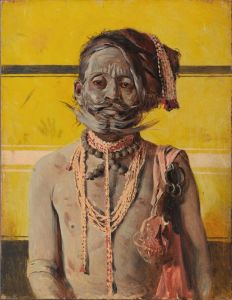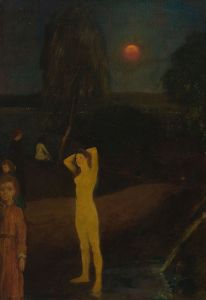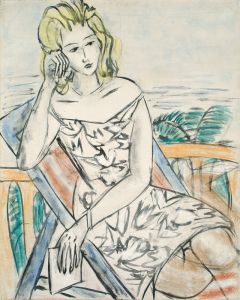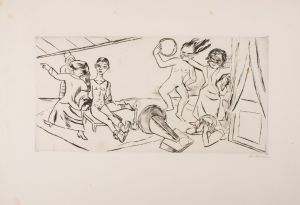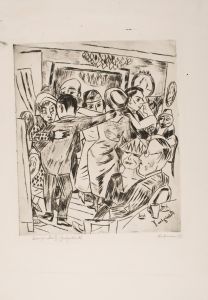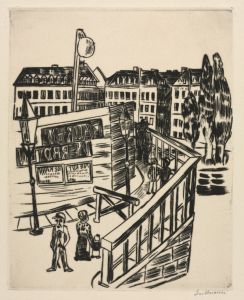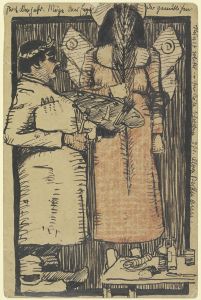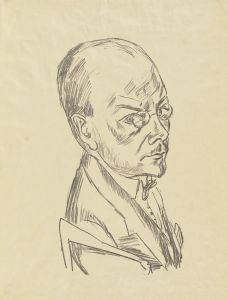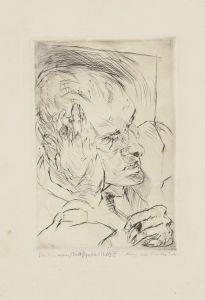
Sketch for Receiving the Holy Ghost
A hand-painted replica of Max Beckmann’s masterpiece Sketch for Receiving the Holy Ghost, meticulously crafted by professional artists to capture the true essence of the original. Each piece is created with museum-quality canvas and rare mineral pigments, carefully painted by experienced artists with delicate brushstrokes and rich, layered colors to perfectly recreate the texture of the original artwork. Unlike machine-printed reproductions, this hand-painted version brings the painting to life, infused with the artist’s emotions and skill in every stroke. Whether for personal collection or home decoration, it instantly elevates the artistic atmosphere of any space.
Max Beckmann, a prominent German painter, is known for his distinctive style that combines elements of Expressionism and New Objectivity. One of his lesser-known works, "Sketch for Receiving the Holy Ghost," reflects his complex approach to religious and existential themes. While there is limited information available specifically about this sketch, it can be contextualized within Beckmann's broader body of work and his artistic journey.
Max Beckmann was born on February 12, 1884, in Leipzig, Germany. He studied at the Weimar Academy of Art and quickly became a significant figure in the German art scene. Beckmann's early work was influenced by Impressionism, but he soon developed a unique style characterized by bold lines, dramatic compositions, and a focus on the human condition. His experiences during World War I, where he served as a medical orderly, profoundly impacted his art, leading him to explore themes of suffering, redemption, and the human psyche.
"Sketch for Receiving the Holy Ghost" likely fits into Beckmann's exploration of religious themes, which he often approached with a sense of ambiguity and personal interpretation. Beckmann was not conventionally religious, but he frequently used religious motifs to delve into deeper philosophical questions. His works often depict scenes of transformation, introspection, and the search for meaning, which can be seen as a reflection of his own existential inquiries.
Throughout his career, Beckmann produced several works that incorporate religious imagery, such as his triptychs, which are reminiscent of altarpieces. These works often juxtapose sacred and secular elements, creating a dialogue between the divine and the earthly. Beckmann's use of religious symbolism is not straightforward; instead, it invites viewers to engage with the complexities of faith, spirituality, and human experience.
Beckmann's art was not always well-received during his lifetime. The rise of the Nazi regime in Germany labeled his work as "degenerate art," leading to his dismissal from his teaching position at the Städelschule in Frankfurt and the removal of his works from German museums. In 1937, Beckmann fled to Amsterdam and later moved to the United States in 1947, where he continued to paint until his death in 1950.
While specific details about "Sketch for Receiving the Holy Ghost" are scarce, it is reasonable to consider this work within the broader context of Beckmann's oeuvre. His sketches often served as preparatory studies for larger paintings, allowing him to experiment with composition and thematic elements. This sketch may have been part of his process in developing a more comprehensive exploration of spiritual themes.
In summary, Max Beckmann's "Sketch for Receiving the Holy Ghost" is a testament to his enduring interest in the intersection of art, religion, and existential inquiry. Although specific information about this sketch is limited, it reflects Beckmann's broader artistic concerns and his ability to convey profound philosophical questions through his distinctive visual language.






